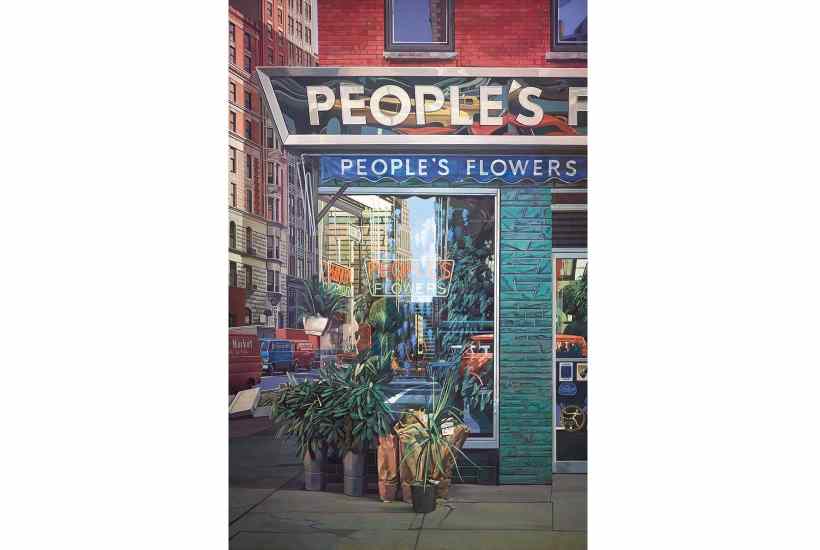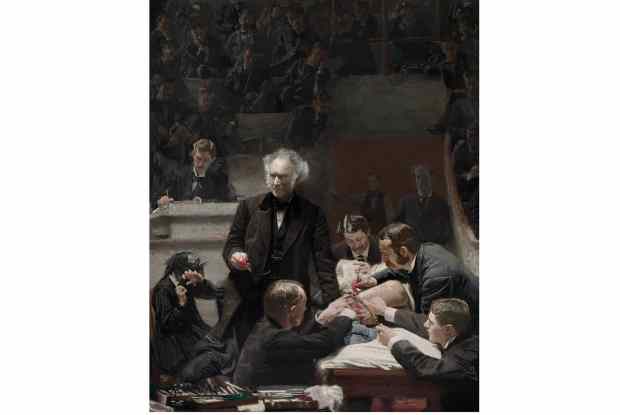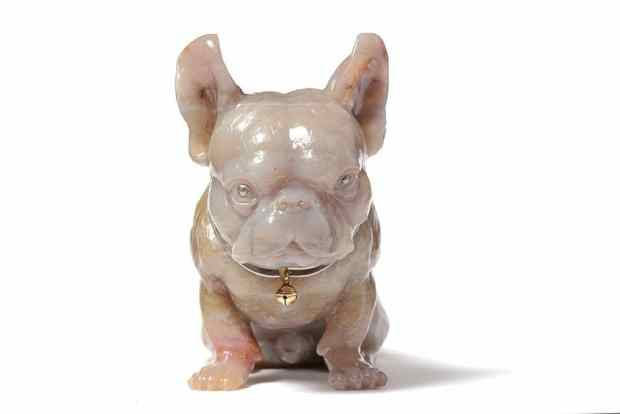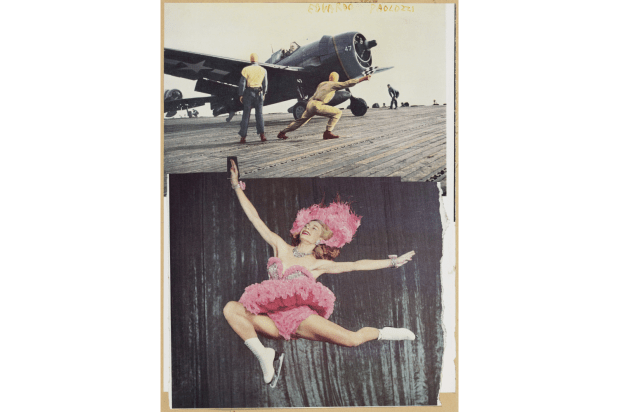I can no longer remember when it was that high streets did not all look the same. The architectural writer James Maude Richards bemoaned the disappearance of local character from our shops as early as 1938, but even so he could include a plumassier, submarine engineer and shop of model transport in his winsome introduction to the high street. With the exception of some of the specialists, subs included, these were shops that could still be found in many towns beyond London.
Eric Ravilious did the illustrations for the book (which, alongside three of the original prints, is on show at the Arc gallery in Winchester from 18 February to 15 May). Ravilious depicted with characteristic charm the rows of model sail boats lining the windows of Bassett-Lowke, and the submariners’ diving suits — so otherworldly in their vast dimensions — and the exotic premises of Mr A. Pollard, who was also a furrier, with its pelts of leopard and bear dangling in the shop front and concealing the less edifying activities within (see p33). Pollard had experience of stuffing big game, though by the 1930s, his business was largely in the preservation of family dogs.
‘What makes a shop so exciting as a thing to look at,’ wrote Richards, ‘is, of course, the quantity of goods.’ He praised the sight of cheeses packed tightly into shop windows, and the patterns formed by like objects arranged in order. The whiff of fromage from Paxton & Whitfield, also captured by Ravilious, still hits you long before you see the rounds in the Jermyn Street window.
Cheesemongers and butchers aside, it is rare to find a crowded window after Christmas today, at least on the average high street. Minimalism, the vernacular of modern home furnishing, prevails over shop floors, too.
The homogenisation of high streets has had a direct influence upon the painting of modern cityscapes. By contrast with when Ravilious was working, the shops have become the least interesting things about the high street and are often therefore blurred out or left out of pictures altogether. Most high street scenes in modern gallery windows are characterised by an absence of legible shop signs. The colours of a Barclays or Oxfam may be recognisable, but there’s nothing to tell the tourist or the viewer of the future what function they served. Gazing through the glass of one gallery this week at a phantom high street with no names felt peculiarly meta.
Our high streets, as blank and uninspiring as they’ve become, are not beyond being celebrated in art. Consider the work of Richard Estes. The artist’s paintings of the American equivalent of the high street make even the shabbiest shops uplifting by making their architecture and signage the focus. In ‘Supreme Hardware’ (1974), signs for liquor, ‘supreme hardware’ and dry-cleaners loom over pavements piled with cardboard boxes for refuse collection. ‘Lunch Specials’ (2001) shows a bagel shop — croissants, muffins, deli also available — with a queue of people waiting to order. The door is jammed wide open across the gum-spattered sidewalk. As in many of Estes’s paintings, the picture plane is split vertically, so we see both inside the shop, and out.
Estes is sometimes described as a photorealist, but that is not quite right. His pictures are painterly, while capturing the streets of New York in highly veristic detail. ‘Times Square’ (2004) shows the crosswalk and bright billboards from several angles through reflections in window glass — a favourite Estes motif. If Edward Hopper invites you to pause and watch the couple standing aloof from one another at the bar or restaurant table, or to gaze at the solitude of the shop fronts on a Sunday morning, Richard Estes puts you down on a street right in the middle of things. There’s no standing still. No pondering one’s loneliness in the bustle. His paintings make you feel like you’re walking the city on a normal-to-good day.
Frank Auerbach, who at 90 is almost Estes’s exact contemporary, could hardly be more different in his approach to painting urbanity, but he, too, finds inspiration in the less obvious places. Often drawn to London building sites and the dynamic lines that cut across their chaos, he is best known for his energetic paintings of Camden, which he has captured at all times of day. It is perhaps telling that he has repeatedly approached Camden High Street with his brush, only to stop short of painting the main stretch of it.
His ‘Camden Theatre in the Rain’ (1977), featuring the junction between the high street and Crowndale Road, is a blaze of oranges and reds worthy of a Sicilian piazza at sunset. Mornington Crescent, where he’s had his studio since the 1950s, stands at the opposite corner of the high street and appears in his paintings as the centre of the world in its zigzag liveliness, like in Louis de Bernières’s play. The bleak central run of Camden High Street could certainly benefit from the Auerbach treatment.
I can’t help being wistful for the dreamy serenity of J.M.W. Turner’s series of watercolours and oils of the High in Oxford as well. The most famous of them, ‘High Street, Oxford’ (1810), looks north to Carfax Tower through the corridor of colleges lining the pavements. Dons in cap and gown wander among clergymen and women — the latter inserted ‘for the sake of colour’ — and look on as someone drops their precious fruit basket. This part of the high street remains more or less empty of shops. The composition needn’t be altered very much to capture the mood of the place today. It is a rare example of somewhere that has stood still.
Realistically, the modern high street demands not a Turner but a Hogarth to capture its human dimension. ‘Four Times of the Day’, four paintings by the artist reproduced as engravings in the 1730s, offer some depressingly familiar sights. A woman looks past the cads and drunks loitering outside a coffee house. A dead cat lies in the gutter in the region of Charing Cross Road while people eat pie off the ground. An insalubrious barber cuts his client while shaving him and the homeless shelter beneath his windowsill. Only the area around Sadler’s Wells looks in any way desirable but then, it has a cow, which is long gone.
An illustrated book of the modern high street would be duller and less uplifting than Richards’s and Ravilious’s offering, but there may yet be potential between the cloned shops and the closed shops, the spartan windows and the to-let signs, for a continuing series as candid as Hogarth’s and Estes’s combined. Who anyway needs a plumassier when we have Greggs and its chicken bake?
Got something to add? Join the discussion and comment below.
Get 10 issues for just $10
Subscribe to The Spectator Australia today for the next 10 magazine issues, plus full online access, for just $10.
You might disagree with half of it, but you’ll enjoy reading all of it. Try your first month for free, then just $2 a week for the remainder of your first year.














Comments
Don't miss out
Join the conversation with other Spectator Australia readers. Subscribe to leave a comment.
SUBSCRIBEAlready a subscriber? Log in